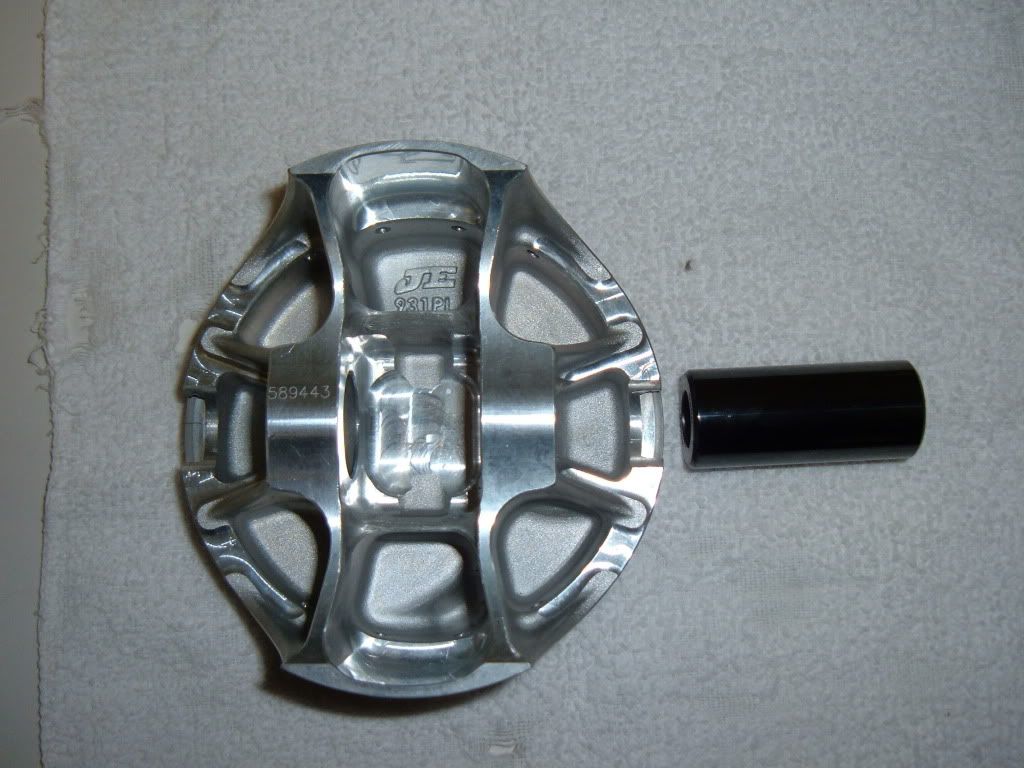I'd also wager that the NASCAR engines have significantly lighter reciprocating components than my 427 dyno mule did, which would also be easier on the bearings.
Nascar Rods are around 530g, Pistons are usually around 500g @ 4.185" bore, pins range from 71g to around 130g.
The pic are used JE Nascar SB2 takeouts 106.172mm-4.180", 1" C/H, and use 866 x 2" wrist pins, rings are .043 top & 2nd with 2mm oil with oil rail supports and weigh in at 378g. Pins are New Casidium coated .866" x 2" x .180" wall and weigh in at 100g.
Rod bearings that are used on the 1.850" & 1.888" jrls run a std bearing on the bottom and a .001' under on the top, this I learned from the used sets I have bought.. The rods are piston guided, so the rod side clearance is set between the pin bosses and the small end of the rods (any where's between .006" & .015" from what I have been told from some one that builds these motors), and the big ends never touch each other or the sides of the crank so no friction.
I am thinking how much more would a 4.250" piston weigh, it's only .070" larger than a Nascar Piston. I have a call to JE asking how thick a pin wall is need for a .787" dia 2.0" long pin for a 4.250" bore piston.
